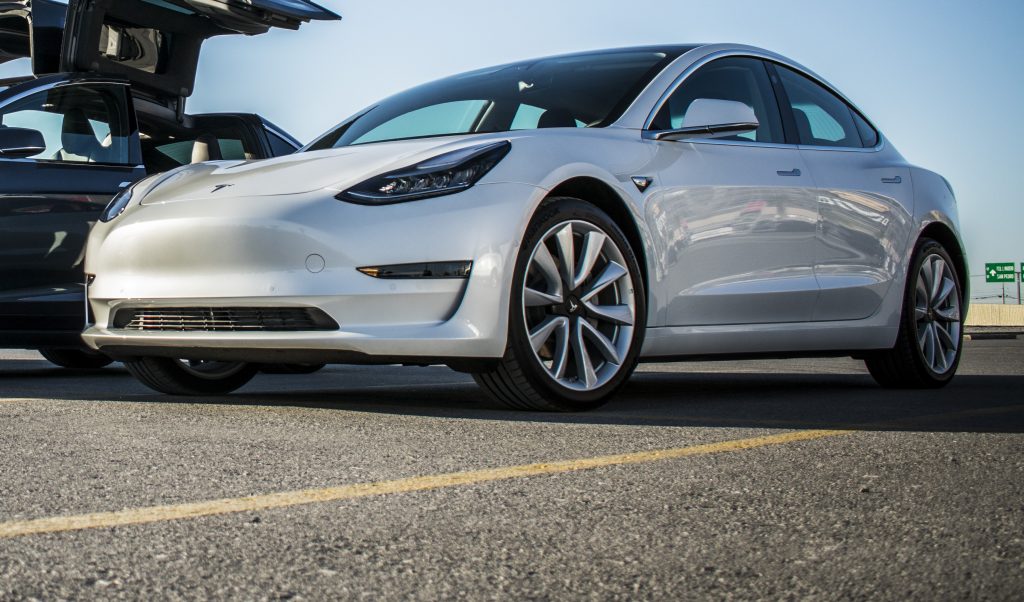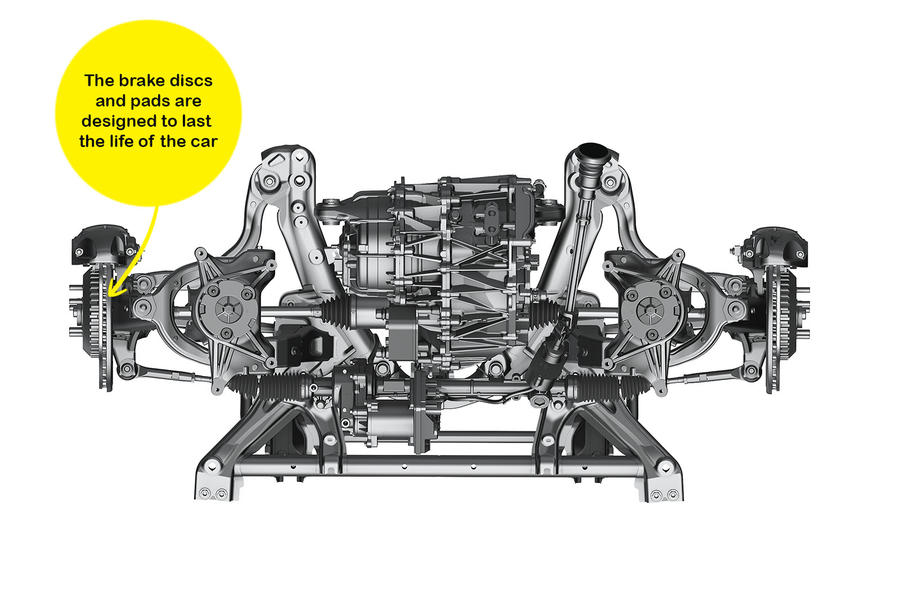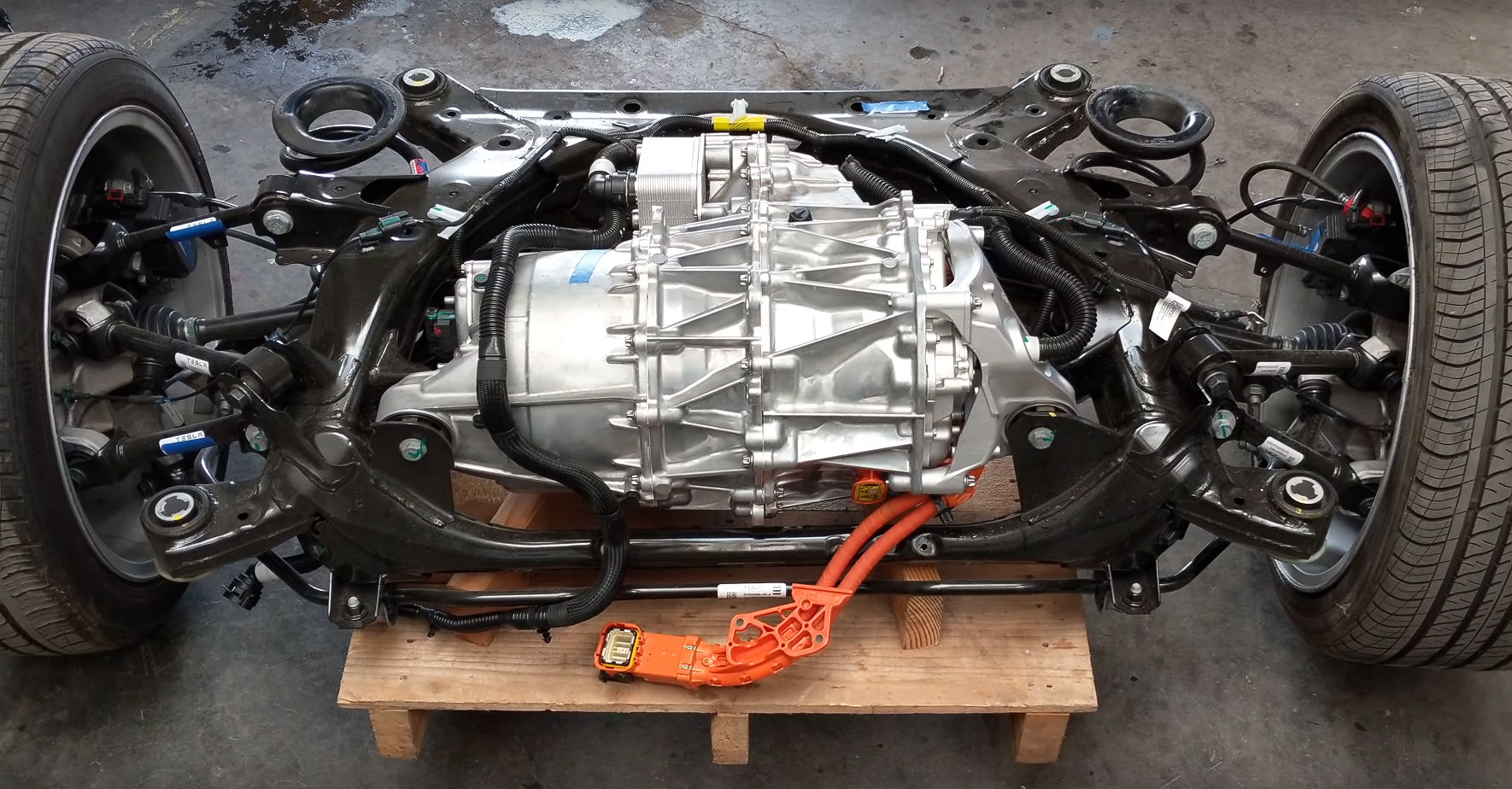The Tesla Model 3 is practically taking over the electric car market, establishing a strong presence in every region where it is released. A key reason behind this lies in the fact that the Model 3 happens to be a really fine automobile that just happens to be electric. It’s quick on its feet, handles nimbly despite its weight, and it provides a ride that is both sporty and comfortable.
One of the UK’s most established motoring magazines, Autocar, spoke with a number of Tesla engineers to gain some insights on the design and development process of the Model 3. The result was an extensive discussion in how a clean-sheet design and a serious commitment to safety could make all the difference when creating a car that is, for all intents and purposes, intended to reinvent the automobile.
Tires
Immediately emphasized by the Tesla engineers was that the Model 3’s chassis and suspension were designed using a ‘first principles’ clean-sheet approach. This started with the Model 3’s tires, which the engineers fondly described as the “unsung heroes” of the vehicle, being critical to its feel and drivability. The development of the Model 3’s tires began back in 2015, when Tesla started working with manufacturers to create the ideal tires for the electric sedan.
The engineers noted that the tires of a high-performance electric car like the Model 3 are challenged in different ways compared to gas-powered automobiles. This is due to a number of factors, including the vehicle’s weight and its instant torque. Since the bulk of an EV’s mass is situated lower down compared to a vehicle with an internal combustion engine, there is less vertical force buildup on the outside pair of tires to generate grip when cornering.
To address this, Tesla focused on tread stiffness, even developing new compounds to deliver a good combination of cornering grip and low rolling resistance for the Model 3’s tires. Sound-absorbing foam placed inside the tire cavity further increases comfort during driving by suppressing noise. The Model 3’s rear wheels hold some interesting secrets as well. The engineers revealed that each rear wheel of the electric sedan has six degrees of freedom, with five links and one damper, though the links are split to allow superior control over forces that are transmitted through the vehicle’s tire contact patch.

Safety Systems and Steering
The Model 3 has earned a perfect 5-Star Safety Rating from the NHTSA, the Euro-NCAP, and the ANCAP. This comes as no surprise, considering that the vehicle is designed from the ground up to emphasize safety. The Model 3’s front suspension, for example, was specifically designed to provide maximum protection in small-overlap frontal collision crash tests.
Sacrificial links that are designed to snap when the front wheel and suspension get damaged are also integrated into the vehicle, allowing the Model 3’s front wheels to rotate. This moves the front wheels outside the Model 3’s body, while pushing the car, its occupants, and its battery pack from the point of impact. These safety systems extend to the Model 3’s dual-motor AWD variants as well.
— JPR007 (@jpr007) August 6, 2019The additional MOTOR in All-Wheel-Drive variants sits on two mounts in the ‘V’ of the front subframe and pivots backwards into an empty void in the event of a collision.
This means less risk of heavy metal parts coming through into the passenger compartment and its occupants. pic.twitter.com/olQbd9EPSt
Tesla designed the Model 3’s electric power steering system to have a rapid 10:1 ratio. The power steering is equipped with full redundancy with separate power feeds taken directly from the vehicle’s high-voltage battery. The engineers also mentioned two electronic modules and two inverters providing “hot backup” to the system if one fails.
Brakes
The Model 3’s braking system is quite unique, in the way that Tesla opted to equip the electric sedan with more expensive four-pot brake calipers at the front wheels instead of a single-piston sliding mechanism. This gives the Model 3 superior pedal response, and it opened the door for the electric car maker to design its own piston seals that fully retract the brake pads after braking; thus, boosting available driving range and cutting drag. Such a system adds to the Model 3’s efficiency, which has proven superior to other premium electric vehicles like the Audi e-tron and the Jaguar I-PACE.
Elon Musk has mentioned multiple times in the past that brake pads in a Tesla will last for the lifetime of a vehicle. This is no exaggeration, according to the Tesla engineers, who noted that the Model 3’s discs and brake pads are designed to last for around 150,000 miles. This is made possible by the Model 3’s regenerative braking system, which allows drivers to slow down the vehicle without using its physical brakes. As for rust issues, the engineers pointed out that Tesla has developed new anti-corrosion techniques for its electric cars.

Suspension
Perhaps the most interesting tidbit discussed by the Tesla engineers involved the Model 3’s suspension. In true Elon Musk fashion, Tesla actually used concepts from NASA when it was refining the suspension settings of the electric sedan. The electric car maker based the Model 3’s suspension settings on a study by the space agency about how long the human body can be subjected to a certain frequency without feeling uncomfortable. Considering that the vertical frequency of a suspension’s movement affects comfort and drivability, Tesla engineers settled on a vertical frequency that is equivalent to a brisk walk or a slow run to give the Model 3’s chassis a comfortable, sporty feel.
The Model 3’s suspension has impressed a number of industry experts, among them being automotive veteran and teardown expert Sandy Munro of Munro and Associates. During his teardown of the vehicle, Munro noted that the Model 3 has areas of improvement in its body and finish, but everything from the electric car’s suspension, all the way down to its tires, is flawless. In a segment on YouTube’s Autoline TV, Munro mentioned that the person who tuned the Model 3’s suspension could easily be an “F1 Prince.”
During the electric car maker’s second-quarter earnings call, Elon Musk mentioned that the “story for Tesla’s future is fundamentally Model 3 and Model Y.” While the Model S and Model X were made to prove that electric vehicles could be superior alternatives to gas-powered premium sedans and SUVs, the more affordable Model 3 — and in extension, the Model Y — would likely be the cars that could reinvent the automobile and encourage mass-market car buyers to rethink what a vehicle could be like. Based on the Model 3’s success so far, it appears that Tesla is so far succeeding in this endeavor.
H/T to JPR007.
